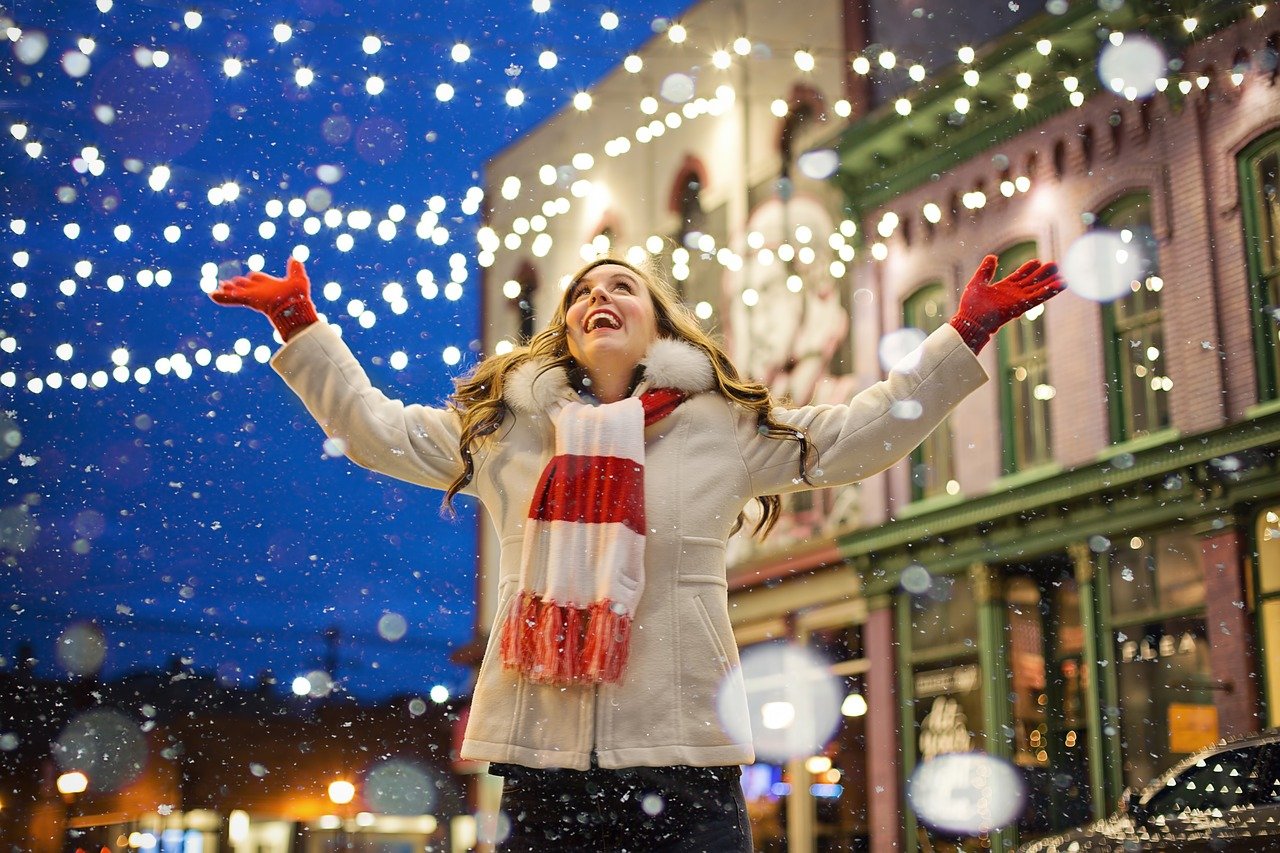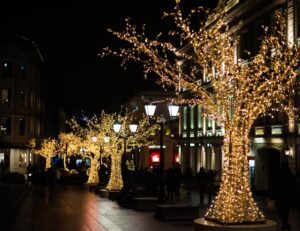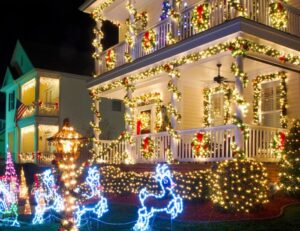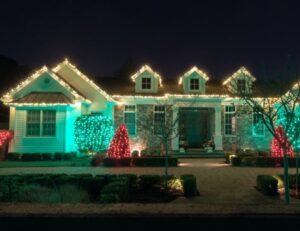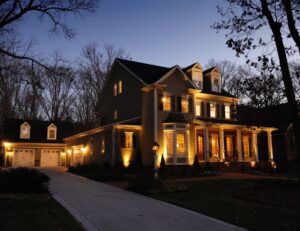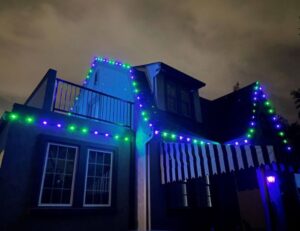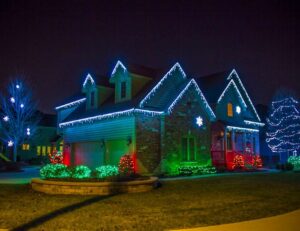As the vacation season processes, the air fills with pleasure and the smooth glow of Christmas lighting graces homes some distance and huge. Yet, amid the joy, it’s vital to consider that protection has to shine just as brightly as those twinkling bulbs. Decorating with Christmas lighting is a cherished way of life, but it comes with sure dangers.
In this guide, we’ll unravel the art of secure excursion illumination, offering critical pointers and precautions to ensure that your festive show remains a source of joy, without any unwelcome surprises.
Safety Tips For Decorating With Christmas Lights
Here are the tips for decorating your home with Christmas lights with these safety tips:
Check Your Lights Before Decorating
Before hanging or placing your Christmas lights, carefully inspect them for any visible damage, frayed wires, or broken bulbs. Damaged lights can pose safety hazards, so it’s essential to replace or repair them before use.
Use LED Lights
LED lighting is a more secure and more electricity-green choice compared to standard incandescent lighting fixtures. They emit less heat, decreasing the threat of fire, and that they use considerably much less energy, saving you money on power payments.
Choose Outdoor Lights for Exterior Decorations
If you are planning to decorate the exterior of your home, be sure to use lights designed for the outdoors. They are highly weather resistant and can withstand rain, snow and temperature fluctuations.
Also See:
Follow the Manufacturer’s Guidelines
Explanation: Always adhere to the manufacturer’s instructions for installation, including the recommended number of lights you can safely connect in a series. Overloading circuits can lead to overheating and fire hazards.
Use UL-Listed Lights
Look for Christmas lights that have been tested and certified by Underwriters Laboratories (UL) or a similar safety organization. UL-listed lights meet safety standards and have been evaluated for their safety.
Don’t Overload Outlets
Avoid plugging too many lights into a single outlet or power strip. Overloading can trip circuit breakers, cause electrical fires, or damage your home’s wiring. Use power strips with built-in circuit protection if needed.
Secure Lights Properly
Use appropriate clips, hooks, or hangers to secure lights to your home’s surfaces or decorations. Avoid using staples or nails, as they can damage wires and create safety hazards.
Keep Lights Away from Flammable Materials
Ensure that your Christmas lights are not in direct contact with flammable materials such as curtains, drapes, or dry branches. Keep a safe distance to prevent potential fire hazards.
Use Outdoor Extension Cords for Outdoor Displays
If you’re extending your lights outdoors, use extension cords specifically designed for outdoor use. These cords are designed to withstand exposure to the elements.
Turn Off Lights When Unattended
To conserve energy and reduce the risk of fire, turn off your Christmas lights when you go to bed or leave the house. Consider using timers to automate this process.
Avoid Overcrowding
Explanation: Don’t overcrowd your Christmas tree or decorations with too many lights. Overloading can cause overheating and pose a fire risk. Follow recommended guidelines for the number of lights per tree or decoration.
Keep an Eye on Pets and Children
Ensure that pets and young children don’t chew or play with Christmas light cords. Supervise them around the decorations to prevent accidents.
If you are looking for a Christmas lighting company to install lights safely, choose American Holiday Lights Christmas lighting installers.
Also See:
- Christmas Light Safety Tips: Do’s and Don’ts
- Best Ways To Decorate Trees With Christmas Lights
- Hanging Christmas Lights Outside: 5 Best Tips + Pro Advice
Frequently Asked Questions
Why is it important to check Christmas lights before use?
Checking Christmas lights before use is crucial to identify any damaged or faulty wires, bulbs, or connections that could pose safety hazards, such as electrical shocks or fires.
Are LED Christmas lights safer than incandescent lights?
Yes, LED Christmas lights are safer than incandescent lights because they emit less heat, reducing the risk of fire, and they are more energy-efficient, decreasing the chances of overloading circuits.
What should I look for when shopping for outdoor Christmas lighting fixtures?
When shopping for outdoor Christmas lighting fixtures, search for lighting fixtures in particular classified for outdoor use. They are designed to withstand climate conditions and are much less likely to become worse whilst uncovered to moisture and temperature fluctuations.
Can I join a couple of units of Christmas lighting fixtures collectively?
Yes, you may generally join multiple units of Christmas lighting fixtures collectively, however it’s important to comply with the manufacturer’s tips for the maximum range of lighting that can be thoroughly linked in a sequence. Overloading can cause electrical troubles.
Should I use electricity strips with Christmas lights?
Yes, the use of strength strips with integrated circuit protection can be a good concept, in particular if you have more than one light connected. These energy strips can help save you circuit overloads and decrease the risk of electrical fires.
How can I steady Christmas lighting fixtures correctly to my domestic or tree?
Use clips, hooks, or hangers in particular designed for securing lights. Avoid the usage of staples, nails, or adhesives that may damage wires or surfaces. Secure the lights carefully to save you from sagging or drooping.
Can I leave Christmas lights on in a single day?
While it is typically secure to set Christmas lights on in a single day, it is really useful to show them off whilst you go to bed or leave the house. Consider the usage of timers to automate the on/off time table to conserve strength.
What should I do if Christmas lighting grows to be damaged for the duration of the season?
If you are aware of any harm to your Christmas lights, consisting of uncovered wires or broken bulbs, replace or restore them right now. Damaged lights can pose protection risks and ought to not be used.
